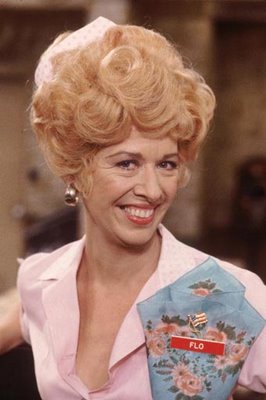One of the drudgeries of sales management is combing through resumes looking for that “Aha Moment.” Through real or virtual stacks of Curriculum Vitae, sales managers wait and hope for at least one spark to jump out as the reason to contact the applicant and start the interview process.  Even worse is the realization that can come some time later that the spark was false, a mirage, a masquerade.
Even worse is the realization that can come some time later that the spark was false, a mirage, a masquerade.
A failed hire is like looking up into the sky and getting excited over the first star at night, only to see it move and become disappointed that it’s just an airplane. Here’s an idea for increasing the chance an Orion joins your team instead of a 747.
Over coffee, I asked a colleague of mine how he has been so successful finding inside business to business (B2B) sales people. His answer surprised me. I expected to hear about a particular college major, experience in other business roles, or some sort of extra-curricular like team sports. Instead, he said he loves and has had a lot of success hiring people who speak positively about their experiences waiting tables.
Waiters.
Really?
Hmm.
Ever wait tables? I did and I loved it. Until that coffee meeting, though, I hadn’t connected it to my career in sales. Here are my three reasons for enjoying being a waiter all those years ago:
1) Variable Compensation – As long as you provide the minimum expected service, you get 15% (usually). Exceed expectations and the tip rate goes up. Get real busy, turn tables, exceed expectations – JACKPOT.
2) Teamwork – As long as I helped others – bar staff, hosts and hostesses, line managers, they helped me. If everyone does their job well, we all make more money.
3) Service – A lot has been written lately about Servant Leadership – the idea that you will succeed in business if you give priority attention to the needs of your colleagues and those you serve. While waiting tables in my teens and twenties, I wasn’t introspective enough to realize it, but I really did get jazzed by knowing that I had a role in creating a table full of content diners.
So, it does make total sense. I certainly would want to interview an applicant who hoped for variable increased compensation, who’s resume showed the ability to function well as a member of a team, and who appeared to be happiest when serving others.
Further, according to stuckserving.com, the top three skills you need as a waiter and waitress are the ability to 1) manage your time, 2) multi-task, and 3) get along with people.
One at a time:
Time Management –
Stuckserving.com says sometimes you need to speed up your effort and treat your diners as if they are your only table. Other times you have to slow down aware of the pace your table desires. And “never keep a guest waiting more than 5 minutes (it feels like 20 minutes to guests) for anything, especially the check. You do want a big tip, don’t you?”
What if we re-wrote the last paraphrased and quoted paragraph with some minor substitutions and additions:
Sometimes you need to speed up and treat your PROSPECTS as if they are your only OPPORTUNITIES. Other times you have to slow down aware of the [BUYING PROCESS] pace your PROSPECT desires. And “never keep a PROSPECT waiting more than 5 minutes (it feels like 20 minutes to PROSPECTS) for anything, especially the AGREEMENT. You do want a big COMMISSION, don’t you?”
Perfect.
Multitasking –
Stuckserving.com explains why “full hands in, full hands out” is a guiding principle for successful waiter: “A good waiter or waitress knows that the more productive they can make each trip to their tables, the easier the whole shift is going to go….Always think, ‘How much can I get done on this trip out to the floor’.” But it goes deeper than that. A good waiter doesn’t just do that tasks he enjoys, like taking down orders and delivering the bill, collecting the tips. He also knows that to be successful he has to check-in on his table to see if they need anything, keep tables clean of clutter, answer questions about the menu, etc. And sometimes, he has to pivot from one table to another clearing one, answering a question at another while delivering ketchup to a third. All with a smile and the right amount of enthusiasm.
Same with sales.
For outside sellers, “full hands in, full hands out” means maximize your time in the field asking yourself constantly whether there are other prospects or clients near the area I am going to that day or week. For inside sellers, “full hands in, full hands out” means asking themselves, “How much can I accomplish with this conversation? Or email?” Even though sales people try to plan out their processes and schedule their days, interruptions happen. Multi-tasking also means that pivoting is part of the job description. While you are researching a new prospect, you may get an urgent call or email from another. A manager may request your assistance with another opportunity. Top notch sellers can take on the extra tasks and juggle their responsibilities.
People Skills –
Curmudgeon’s need not apply.
Stuckserving.com defines people skills as the ability to make total strangers like you by establishing rapport and finding something you have in common. But do not be false. People skills include being honest about dishes and possible menu shortcomings. “If the guest sees that you are really trying to take care of them, then they will take care of you. Be professional, but let your personality come out.”
Being extroverted, gaining rapport, being able to find common ground – this is not new ground for defining sales skills. But the second part of the “People Skills” definition is enlightening. Buyers, like diners, want to feel comfortable that the seller they ultimately buy from is genuine, cares about helping them, and treats them with respect. Did the waiter push the special of the day because it was delicious and exactly what I wanted or because it was expensive and the restaurateur over-purchased that item that week? Sophisticated buyers (and diners) can sense when their needs and objectives are out of alignment with the sellers. It’s a big turn-off and can often explain losses to no-decision or a more “waiter-like” competitor.
I’ve had my clients (after I worked with them) toot their horns that they were told by new customers that they won an opportunity not necessarily because of what they sold, but rather how they sold it. That they seemed trustworthy and respectful in the sales process, and the feeling was among the decision makers that if they were like that in the sales process, they were more likely to be customer focused in delivery and support.
Back to my coffee colleague. He hit on another extremely important similarity between inside sellers and waiters: They both often have to deal successfully with different personas in a short amount of time. Their livelihood depends on it. A the same time, a waiter may have one table of rowdy kids and harried parents, another with lovebirds that just want to be left alone, and a third with demanding professionals interested in the exact amounts of butter or salt the chef uses in particular dishes. He has to treat all three tables well, respecting their different needs and circumstances. The same with sales people: Within the same opportunity, one key player may only be interested in long term product plans and high level descriptions, a second may be the financial buyer demanding a tightly described cost v. benefit analysis, and a third may be a previously burned technical buyer who needs to check copious references and fully understand your implementation scheme before coming on board. The best sales person appreciates that all buyers (diners) are not the same, yet all need to be treated with respect (served).
So, who knew that your favorite bistro was also a crucible for developing sales talent? That confident guy or gal that greeted you with a smile and asked “where are you from?” or at the end of the meal asked “Would you like to hear about our delicious pie?” He or she may be the next rainmaker for your company.
Good selling (and eating, this post is making me hungry)!


